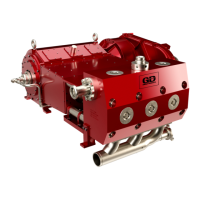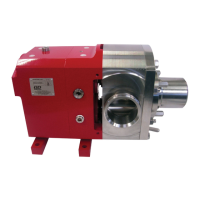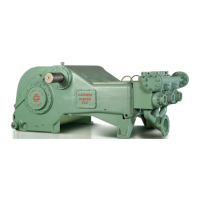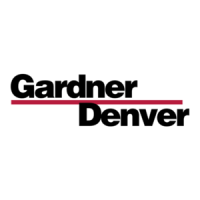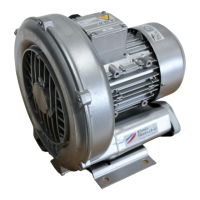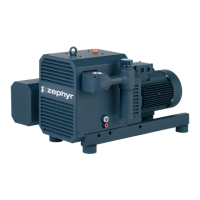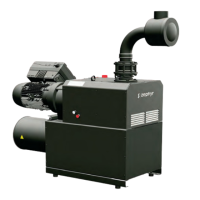Do you have a question about the Gardner Denver 9CDL R Series and is the answer not in the manual?
Explains the meaning and severity of different hazard indicators used in the manual.
Outlines proper procedures for storing the blower to prevent damage and maintain condition.
Guidance on selecting a suitable installation site and preparing robust foundations.
Details on inlet filter selection and proper V-belt drive installation procedures.
Explains the function and installation of bypass valves, heat exchangers, and essential safety devices.
Requirements for shutdown controls and best practices for clean, airtight inlet piping.
Recommendations for discharge piping arrangement, silencers, and proper ventilation for cooling.
Information on the availability of certified outline drawings for blower dimensions.
Covers pre-operation checks, startup sequence, and gradual load application.
Discusses pressure vs. vacuum service and requirements for water quality in wet vacuum applications.
Details operating limitations related to altitude, speed, and discharge temperature.
Procedures for safely stopping the blower, including pressure reduction and check valve use.
Guidelines for immediate actions in case of system failures or abnormal blower operation.
Emphasizes clean workspace and proper lubrication levels for gears and bearings.
Importance of servicing air filters and methods for cleaning different filter types.
Instructions for cleaning and maintaining oil bath and oil wetted filter-silencers.
Covers maintenance for dry filters, discharge silencers, rotor shaft seals, and bearing oil seals.
Outlines essential inspections and common reasons for blower failure.
Guidance on overhaul procedures and how to order replacement parts correctly.
Details on specialized tools and adaptor plates required for disassembly.
Instructions for disassembling the gear end, including removing the cover, hub, and gear.
Procedures for safely removing the discharge end carrier and associated parts.
Steps for carefully removing the rotors from the blower housing using slings and jack screws.
Installing rotor shaft seals and fitting bearing spacers according to specifications.
Assembling the housing and carrier, and lubricating rotors and spacers for proper function.
Assembling bearings and taking initial measurements for shaft shim set thickness.
Calculating and installing shims to achieve correct rotor end clearance.
Mounting the discharge end carrier and verifying total end clearance with a dial indicator.
Installing seals, shims, and bearings using appropriate tools and techniques.
Securing bearing retainers and performing final clearance checks at inlet and discharge.
Installing lockwashers, oil slingers, and end covers with gaskets and screws.
Measuring bearing bore and installing oil seals with correct orientation and clearance.
Installing shims for clearance and pressing roller bearing assemblies onto shafts.
Mounting bearing clamp plates and installing heated pinion and hub assemblies.
Securing retainer nuts and preparing rotors for interlobe clearance timing.
Procedures for measuring smallest minus and plus readings to determine rotor clearances.
Adjusting clearances and completing final tightening of gears and covers.
Outlines exclusions, limitations of liability, and warranty claim procedures.
| Series | 9CDL R Series |
|---|---|
| Type | Centrifugal Pump |
| Impeller Material | Bronze |
| Housing Material | Cast Iron |
| Shaft Material | 416 Stainless Steel |
| Seal Type | Mechanical |
| Power Source | Electric |
| Model | 9CDL |
